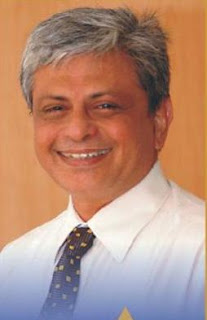Picture credit - Flickr
Day 14 - Critical Thinking Skill
What is Critical Thinking Skill?
Critical thinking is the ability to think in an organized and rational manner in order to understand connections between ideas and/or facts.
While Creative Thinking is about finding new ways of solving problems, Critical Thinking is about evaluating the new ways proposed by the Creative Thinker.
How to improve Critical Thinking Skill?
Set a goal to become a go-to person by mastering the art and science of Critical Thinking.
Follow the LAST model to build your personal brand as a Guru of Critical Thinking.
- Learn - Invest time in learning different models/ techniques of Critical Thinking
- Apply -
- Identify a model suitable to you
- Create a template to document the flow of the process
- Find opportunities to use the selected method/ template
- Maintain record/ process flow of every Critical Thinking exercise you did
- Maintain notes of your thoughts/ insights/ failures/ challenges…. to be used for sharing/ training others
- Share - Share the insights captured in step 2 above in a planned manner (social media posts, blogs, videos, study notes…)
- Train - Generate opportunities to train your peers and team members so that, over time, your organization benefits from your efforts
My learning for the day
The idea of Six Thinking Hats was introduced by Dr Edward De Bono (1933-NA), a Maltese physician and psychologist.
He is known for coining some amazing thinking concepts such as lateral thinking, L Game, Po (beyond yes and no), six action shoes, Sur/petition (a new way to look at competition), six thinking hats etc.
His CoRT (Cognitive Research Trust) programme for schools revolutionised the education system in a number of countries.
Six Thinking Hats is a critical thinking (idea evaluation) tool introduced by Edward De Bono in 1985.
When evaluating an idea critically, most of us have only one viewpoint (mostly depending on our personality traits). This trait does not allow us to look at the proposed idea from an emotional, intuitive, creative or negative viewpoint. The Six Thinking Hats method forces us to conduct the evaluation wearing different imaginary ‘perspective hats’.
This helps us do a better evaluation of the idea and also helps us hone our thinking skills.
The Blue hat person (the coordinator of the exercise) asks all the team members to wear a particular hat and give his/ her inputs/ ask questions
This forces all to focus on one thought-flow at a given time and to collaboratively contribute to that thought, rather than each thinking in different directions
This is how you behave/ think/ ask when you wear these different hats -
White hat - Purpose - to get more facts/ information gaps to facilitate the idea evaluation exercise (Questions to ask the proposer - “what is the available information?” and “what are the facts we have?”)
Yellow hat - Purpose - to convey an optimistic point of view (pros about the idea) (All to answer - “what are the advantages of applying the solution?” and “why do you think it is workable?”)
Black hat - Purpose - to identify the disadvantages/ weaknesses about the idea (cons about the idea) (All to answer - “what are the risks?” and “why will the idea fail?”)
Red hat - Purpose - to provide the gut reactions such as love, hate, like and dislike etc. about the idea (All to answer “what do you feel about the suggestion?” and “what is your gut reaction toward the suggestion?”)
Green hat - Purpose - to trigger altogether new thoughts (creative thinking part of the discussion/ evaluation) (All to answer - "what are some other creative solutions to the problem?" and “how can we improve this idea?”)
Purpose of this document
I took a 66 day challenge to study Life Skills last year (10 April 2019). To my astonishment, I succeeded in studying for 66 days one skill a day.
My objectives of learning these skills were - To strengthen my mind to face life’s challenges with ease, To use these skills in my worklife for a better performance, To use these skills in my personal life for enriching my relationships, To open new possibilities to surprise myself.
This is my next 66 day challenge (from 10 April 2020) - To share my Life Skills learning with my social media friends.
I pray that my toil helps you in your success journey.
What are Life Skills?
UNICEF defines Life skills as - psychosocial abilities for adaptive and positive behaviour that enable individuals to deal effectively with the demands and challenges of everyday life. They are loosely grouped into three broad categories of skills
- cognitive skills for analyzing and using information,
- personal skills for developing personal agency and managing oneself,
- inter-personal skills for communicating and interacting effectively with others.
Which LifeSkills are covered?
The World Health Organisation identified these basic areas of life skills that are relevant across cultures:
- Decision-making
- Problem-solving
- Creative thinking
- Critical thinking
- Communication
- Interpersonal skills
- Self-awareness
- Empathy
- Coping with emotions
- Coping with stress.
Some trivia
‘Life skills’ was never part of the school curriculum. WHO/ UNESCO mandated academia to teach these skills in all schools across the globe in 1993.
Different countries educate their children in these skills with different objectives
- Zimbabwe and Thailand - prevention of HIV/AIDS
- Mexico - prevention of adolescent pregnancy
- United Kingdom - child abuse prevention
- USA - prevention of substance abuse and violence
- South Africa and Colombia - positive socialization of children.


No comments:
Post a Comment